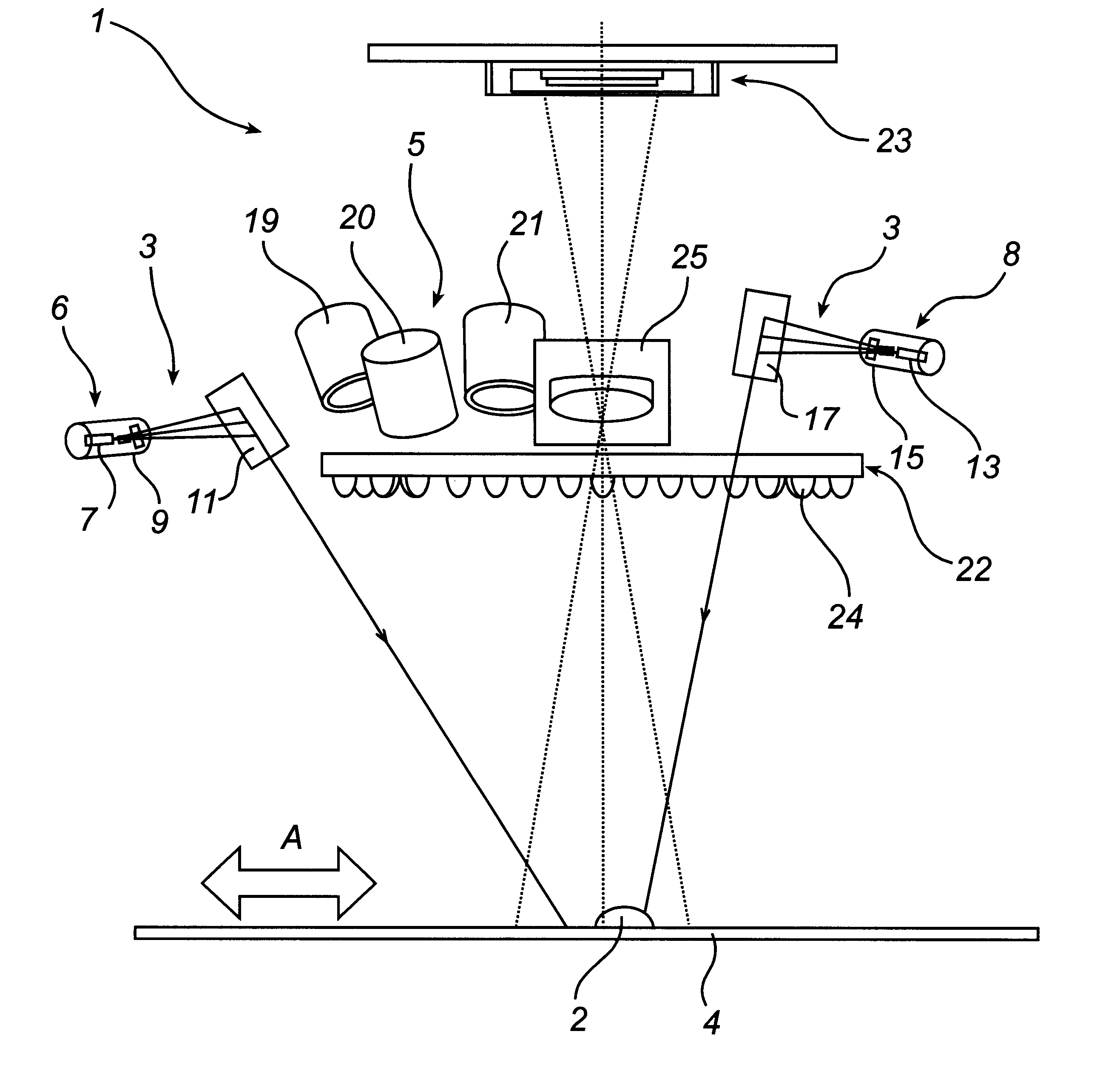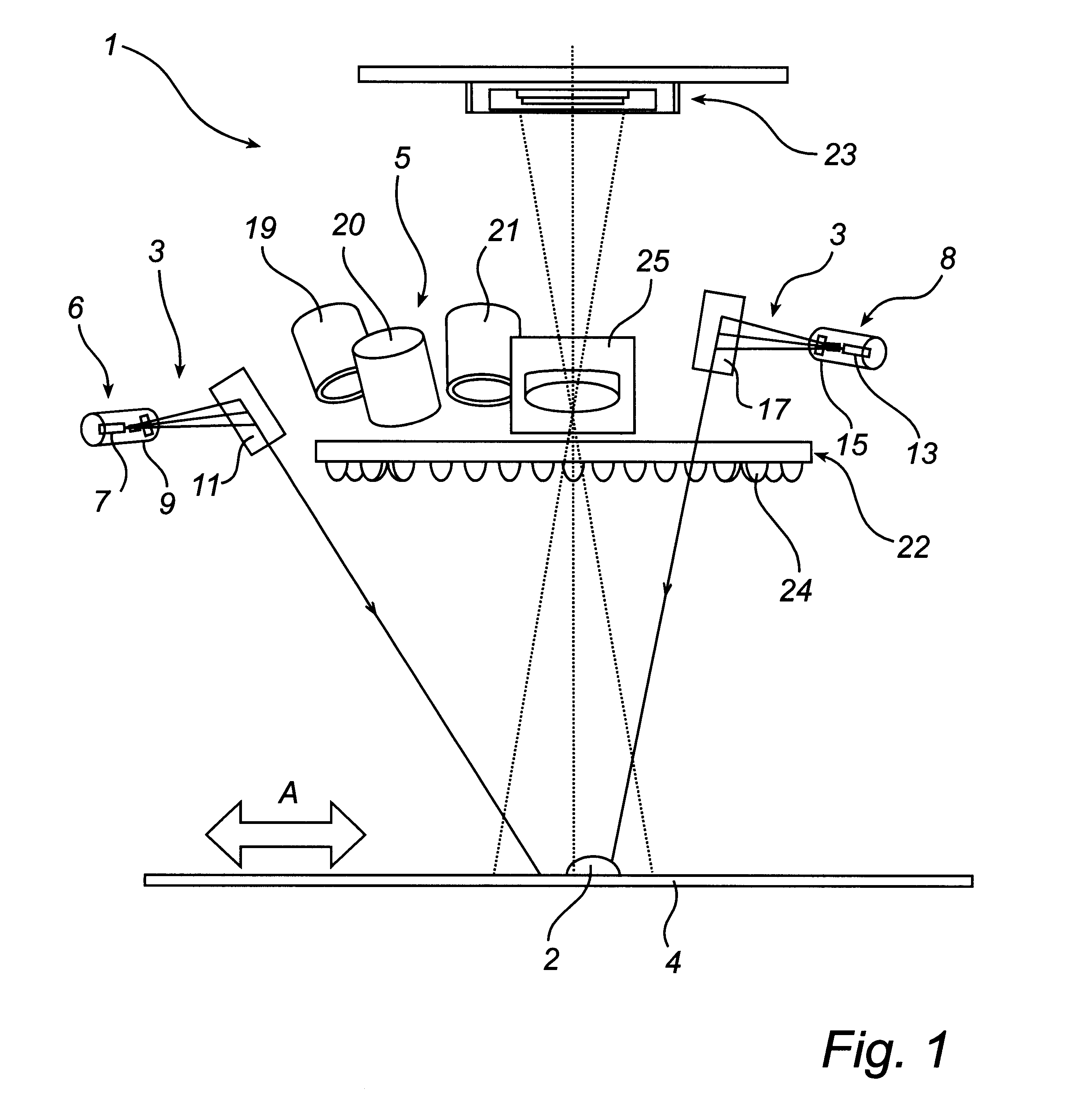Method and device for inspecting objects
a technology of objects and methods, applied in the direction of instruments, image data processing details, image data processing, etc., can solve the problems of prior art methods and devices, insufficient speed and high accuracy for automatic inspection of properties, and inability to meet current and future demands
- Summary
- Abstract
- Description
- Claims
- Application Information
AI Technical Summary
Benefits of technology
Problems solved by technology
Method used
Image
Examples
Embodiment Construction
A device according to an embodiment of the present invention is shown in FIG. 1. The device 1 is arranged above a substrate carrying an object 2 to be inspected. The device 1 and the object 2 are moving mutually, i.e. relative to each other, which is indicated by an arrow A. The object 2 could be of many different kinds as mentioned above. However, for the sake of simplicity of explanation, let us in the following assume that the object 2 is a solder paste deposit, which has been dispensed on the surface of the substrate, designated by 4. Generally, the inspected object 2 covered by the illuminated inspection area embraces a deposit comprising several dots but for reasons of clarity only a single dot 2 is shown in the drawings.
The device 1 comprises a first radiation means 3 for generating radiation of a first range of frequencies, or wavelengths, and a second radiation means 5 for generating radiation of a second range of frequencies. In this embodiment the first radiation means 3 ...
PUM
| Property | Measurement | Unit |
|---|---|---|
| height | aaaaa | aaaaa |
| area | aaaaa | aaaaa |
| time | aaaaa | aaaaa |
Abstract
Description
Claims
Application Information
 Login to View More
Login to View More - R&D
- Intellectual Property
- Life Sciences
- Materials
- Tech Scout
- Unparalleled Data Quality
- Higher Quality Content
- 60% Fewer Hallucinations
Browse by: Latest US Patents, China's latest patents, Technical Efficacy Thesaurus, Application Domain, Technology Topic, Popular Technical Reports.
© 2025 PatSnap. All rights reserved.Legal|Privacy policy|Modern Slavery Act Transparency Statement|Sitemap|About US| Contact US: help@patsnap.com



